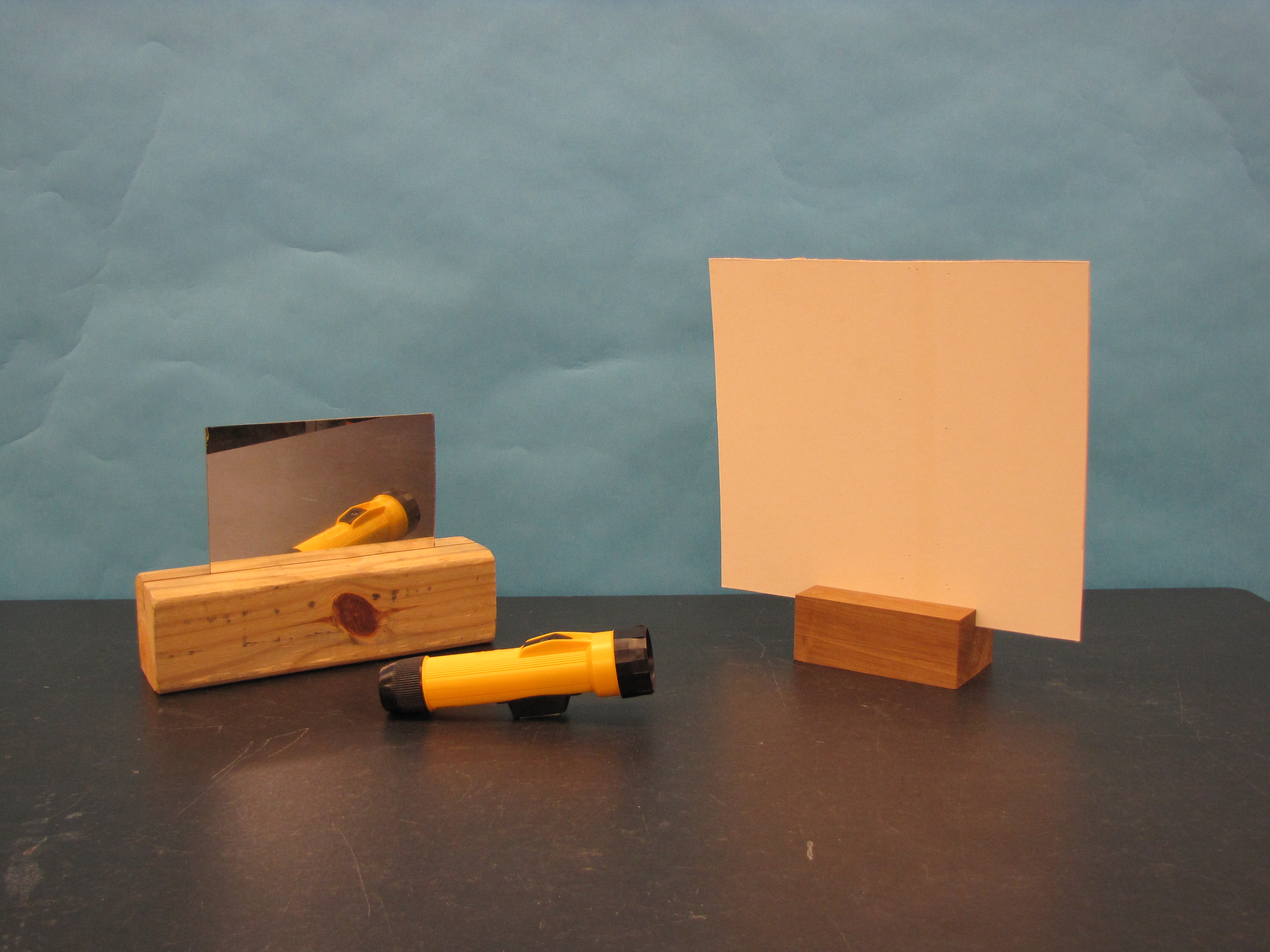Demos: 7A-02 Specular and Diffuse Reflection

In a darkened room, a small light is shone near a white card and a plane mirror. The students can see the white card from any part of the room, but virtually nothing in the mirror. The card scatters (reflects diffusely) the light in all directions but the mirror surface causes the light to reflect specularly so that the light is reflected from the small lamp to one portion of the room only.
Directions: Hold the white card facing the students. Place the mirror in front of the card (the card is larger than the mirror). Darken the room and turn on a small flashlight. Hold it above and slightly forward of the card and aim it toward the card.
Suggestions for Presentation: This demonstration is best performed without comment until completed. Follow the directions above and then ask, “Why can you see the card from any place in the room? Why is the mirror not visible (or dark)?” Then after discussing the Law of Reflection for mirrors, ask why this law doesn’t apply to the white card, since it is a smooth surface. Then discuss the concept of what “smooth” means at the level of the wavelength of light.
Applications: Why is a wet road difficult to see at night? The surface of the road is rough and normally scatters light back toward the driver. But when it is wet it becomes a mirror-like surface and most of the light is reflected forward. Also the oncoming headlights are directly reflected into your eyes.
Last Updated: Nov 30, 2023 11:25 AM